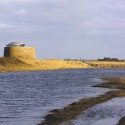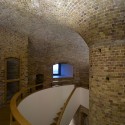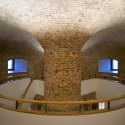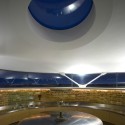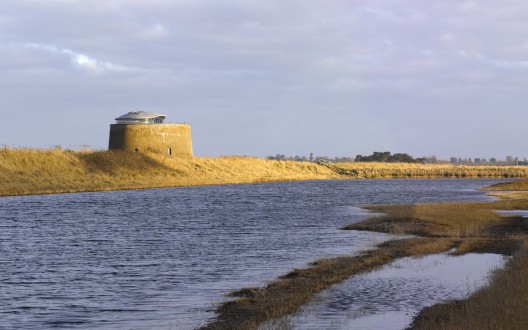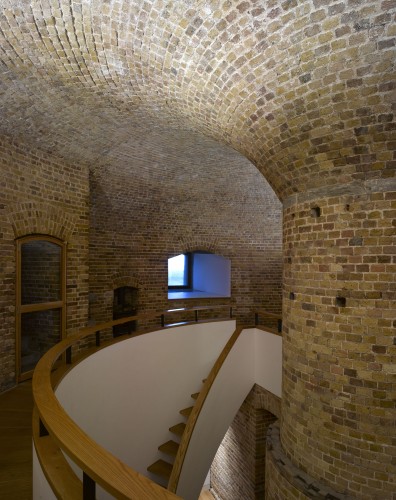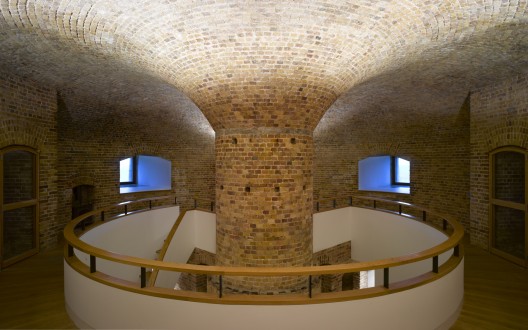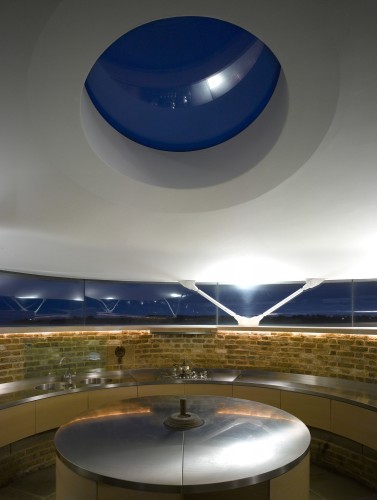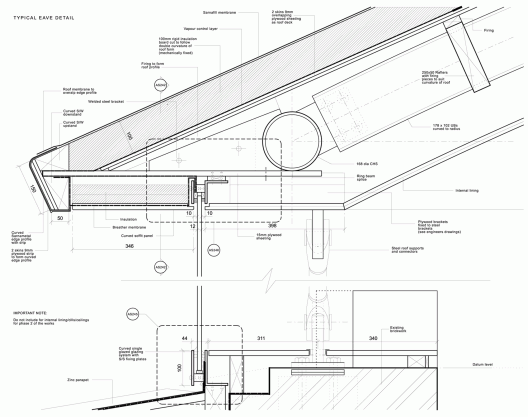بازسازیها و تغییرکاربریها غالبا رویکردهای گوناگونی دارند که از نگاه کارفرما و طراح نشات میگیره. مثلا کارفرمایی به حفظ اصالتها بها میده و بنابراین در بازسازی بنایی قدیمی حفظ اصالتهای معمارانه رو حتی ممکنه به کاربری ترجیح بده.
در بازسازی برج مارتلو مربوط به سالهای آغازین 1800 با رویکردی نوآورانه و فوق العاده روبهرو هستیم. طراح و کارفرما به جای اونکه در فکر بازسازی گذشته یا حفظ کالبد قدیمی صرف باشند یا حتی به جای اون که مثلا کالبد رو برای نیازی امروزی آماده کنن و در کیفیتهای متریالها و نماها و فضاهای داخلی ش دست ببرن علاوه بر مرمت سازهای و عمومی، با افزودن بخشی نوساخت و به شدت متفاوت با بستر کار اما به نحوی که نتیجه کالبدی کامل و جدید و با هویتی متفاوت باشه، گونه ای متفاوت از بهسازی و تغییرکاربری بناهای قدیمی رو به نمایش گذاشتن.
برج مارتلو کماکان هست و تمام تاریخچه ای که میتونسته با کالبد خودش نگه داره، نگه داشته اما حالا ما با بنایی جدید و به کلی متفاوت هم روبهرو هستیم. به این ترتیب کالبد معماری به حیات خودش ادامه داده.
از حق هم نگذریم افزوده مدرن بنا، به خوبی با اون ترکیب شده و نتیجه بنایی با شکوهتر از گذشته ست...
Architects: Piercy&Company
Location: Suffolk, UK
Year: 2009
Photographs: Edmund Sumner
Industrial Designers: Billings Jackson Design
Structural Engineer: Price & Myers, JP Chick and Partners
Joinery: Sam Lucas
Facade Design: Billings Design Associates
Mechanical Engineer: Norman Disney & Young
Lighting: DHA Designs, Zumtobel
Steelwork: Commercial Systems International Limited
Client: Jackson Family
By restoring an 1802 Martello Tower and converting it to a family home, the principles of conservation were pushed beyond preservation, instead aiming to breathe new life into the ‘at risk’ structure.
Strategically the intention was to clearly differentiate the old and the new, avoiding pastiche, with the contemporary insertions touching the original fabric as lightly as possible; allowing the heavily textured masonry to be the star. Designed to be extremely sensitive to the monument and its setting, the new curving roof extension and re-sculpted interior seek to gain creative momentum from the tension between modern requirements and the need for heritage conservation.
Converting a Napoleonic era defence tower built in 1808 into a 21st Century private residence was a demanding brief. As a Scheduled Monument on the At Risk register and located in an Area of Outstanding Natural Beauty, the planning negotiations were matched in complexity by the on-site logistics. Ultimately however, the conversion won the support of English Heritage who heralded it as an exemplar of how to convert significant historical buildings.
Materials and Construction
The tower’s fabric comprises 750,000 bricks but the quality of their construction was not immediately evident. As it was revealed, it set the standard for the design. The new roof is a 3D curved lightweight structure, constructed of steel and laminated plywood, tethered by five pairs of Macalloy bars. A detailed 3D model was used to create 2D cutting patterns for off-site manufacture. A skirt of frameless curved glass below the roof expresses the distinction between old and new as well as providing 360 degree views. The roof, set back to minimize visual impact, is clad in a single ply membrane with three roof lights. The system is elemental as it had to be stored and installed from the gun platform.
In order to bring light into the basement, six 450mm diameter holes were diamond-core drilled through 4.5m of fully bonded brickwork from just inside the window reveals into the magazine bedroom, utility, bunk room and bathrooms. The two other bedrooms have 60mm holes for ‘Camera Obscura’ views of the countryside to the southwest and northwest.
200mm diameter holes were drilled from the top of the parapet to meet the passive ventilation system leading to the ground floor and basement. These brick ducts provide routes for water, electricity, gas for the kitchen and heating to the roof. They also accommodate the supply and exhaust ducts for the heat recovery ventilation system in the basement and ground floors.























